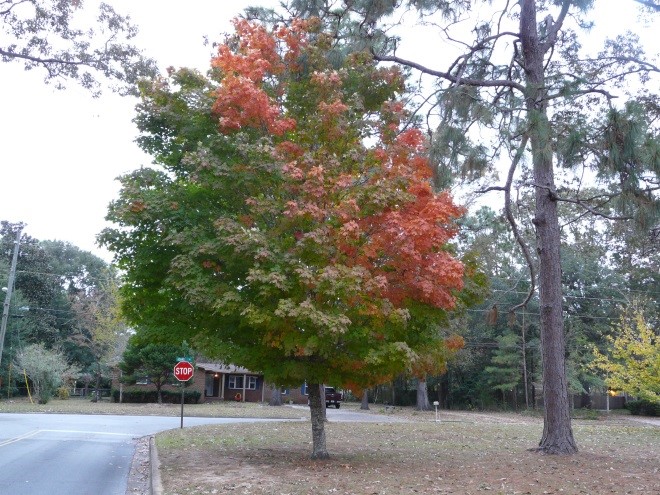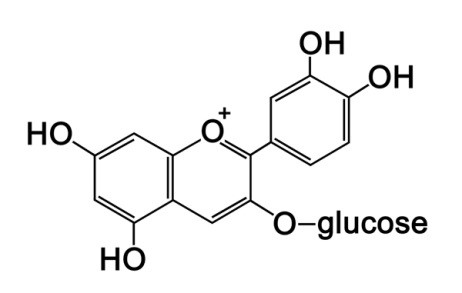Anthocyanins
Anthocyanins are pigments that reflect and transmit most of the red, blue and purple colors we see in leaves, flowers, and fruits. Anthocyanins are water soluble mobile pigments that can travel easily within and between cells and tissues. This pigment can transport sugars and metals to other parts of the plant that need them. This pigment acts as a solar screen to protect chloroplasts from intense light.
Juvenile reddening of young developing leaves is when anthocyanins act as a sun screen. Once the leaves have matured the pigment moves to other parts of the plant.
Autumn leaf color is caused by shorter, warm, bright days and cool nights. Photosynthesis grinds to a halt and sugar levels decline, the levels of anthocyanins decrease. All that is left is a dried brown shell. Leaf starch and proteins are changed to sugars (glucose) and translocated by anthocyanins to safer places within the plant before leaves fall from the stems during frosty nights. Safer places are mainly branches, trunks and roots.
What are the advantages of anthocyanins? They transport sugars, help leaves retain water and protect leaves from environmental damage from daytime sun or evening frost.
Freezing water in the plant cells does not kill a plant. The following is an excerpt from “How Plants Work” by Linda Chalker-Scott.
“Ice forms slowly in the leaves, particularly in the air spaces outside of the cell walls. This intercellular space contains water and is surrounded by nonliving tissue, so when the water freezes is doesn’t cause any damage.”
“As far as the plant is concerned, ice isn’t water. Ice can’t be taken up by the roots or dissolve nutrients. The intercellular spaces become drier as ice forms, sucking water away from the nearby cells. Now the living cells in the leaf are dehydrating and becoming water stressed. The longer the freezing in the spaces continues, the more dehydrated the living cells become. If it goes on too long, the cells eventually die, but they die from lack of water, not from ice damage.” It is thought that the reason for coniferous leaf cells not dying is the intercellular spaces between cells may contain some type of antifreeze like anthocyanins.





